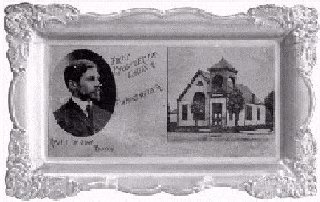 Aluminum: A Material for a New Century
Aluminum: A Material for a New Century Aluminum: A Material for a New Century
Aluminum: A Material for a New CenturyIn the last 150 years, aluminum has gone from being precious to being pervasive. In 1852 the price of aluminum per pound was $545, aluminum jewelry was more highly prized and more fashionable than either silver or gold, and at the Court of Napoleon III in France it adorned the banquet table. By 1897 the price per pound had fallen to 36 cents following Charles Martin Hall's invention of the process for producing aluminum cheaply, and its commercial development by the Pittsburgh Reduction Company (later Aluminum Company of America, and then Alcoa) beginning in 1888.
By the turn of the century aluminum was ready to move out of the traditional luxury, novelty and specialist markets. It was a new material for a new century, and as such it began to have a significant role in shaping 20th-century culture and society. Although international in scope, the exciting story of aluminum in the 20th century is inextricably linked to Pittsburgh and to Alcoa. The Decorative Arts Department at Carnegie Museum of Art is researching the uses of aluminum-past, present and future-and its influences upon everyday life, with the aim of preparing a major exhibition and publication on the topic in the year 2000. The planning stage of this project has been funded with a grant from Alcoa Foundation.
We also intend to build a significant collection of 20th-century designs made wholly or partly in aluminum for the Museum of Art, and to augment the interesting aluminum objects already in the collection. Some of these objects are on display in the Scaife Galleries, such as the picture frame made by the Scottish sisters Margaret and Frances Macdonald in 1897, and the chair designed by the Viennese architect Otto Wagner for the Die Zeit building in 1902. Wagner was the architect of the Die Zeit news dispatch bureau, as well as designer of the interior fixtures and fittings. He used aluminum prominently in the facade of the building, which has been described as "an aggressively untraditional statement wholly appropriate to an office that trafficked in contemporary events." Aluminum had truly arrived on the architecture and design scene with Wagner's use of the metal in this and other buildings.
Recent aluminum acquisitions by the Museum of Art include a pair of folding binoculars (c. 1900), a pair of opera glasses (c. 1910) and a small tray (c. 1905) with photographs of the First Presbyterian Church, New Kensington and its pastor, the Reverend Denise. The binoculars were issued to British Army officers during the Boer War in South Africa, as the light weight of aluminum was an advantage to soldiers carrying equipment over large distances. The tray is probably a novelty item designed as a fund raiser for the church and is on view in the exhibition Wish You Were Here: Tokens and Momentos in the Treasure Room off the Hall of Sculpture balcony. Given the preeminence of Alcoa and its desire to promote and encourage additional uses for the metal, noted designers and architects in the United States such as Frank Lloyd Wright and Russel Wright worked with aluminum, and other designers are linked exclusively with the material, such as Warren McArthur who in the 1930s produced a wide range of tubular aluminum furniture. Aluminum plays an important role in the fine arts as well as in decorative arts. Contemporary artists such as Robert Ryman and Christopher Wool, both of whom participated in recent Carnegie Internationals, use it as a "canvas" for their paintings.
More than being linked with high-style design, art and architecture, aluminum has played a crucial part in shaping 20th-century culture and society. Aluminum touches the lives of us all-from the soda can and foil of a packed lunch to the pots and pans we cook with and the sidings and window frames of our homes. Travel in this century and into the next would not be the same without aluminum, whose impact is felt in many modes of transport from trains, boats and planes to the new Audi A8, the first all-aluminum car to use a spaceframe body structure. Even NASA's space shuttle is sheathed in aluminum alloy. In 1859 the French scientist Henri Deville, writing about aluminum, said, "nothing is more difficult than to introduce into the pattern of men's lives and to get them to accept, a new material, however useful it may be." But during the past century, aluminum has proven useful on many different fronts, and aluminum companies, designers, architects, and scientists have succeeded in making it an irreplacable material not only of the 20th century but also the 21st. As a 1956 Alcoa advertisement predicted, "there's a world of aluminum in the wonderful world of tomorrow."
Sarah Nichols is chief curator as well as curator of Decorative Arts at Carnegie Museum of Art.
People interested in contributing information to the research project
on the history of aluminum can call
622-1905.